Pompeii
There is SO much to say about Pompeii, my blog would be 300 pages long so some of my observations are listed below.
- Our guide was great! He told us so many things and he was really informative and FUN! Not like the other guides we saw who were reading from a script. He knew so much because he was an archeologist and worked at Pompeii on the digs when he was a student.
- His name was Marcello and he was arranged for us by Gaetano Manfredi at Pompeii Tour Guide.
- Thank you also to Valerie Sewell at Travel Square One in Denver for helping us find the guide!
- We were there during the low season so we did not have to deal with crowds. Our guide said usually going into the large sauna is like a gladiator fight to get in. We were all alone in there!
- There were three rooms. The entry which was like a locker room and a cold pool to clean before going in the other rooms.
- The warm room
- The HOT room with a pool that was not safe to actually go in because the water was only emptied about one time a week and there were diseases in it!
- The walls and floor were double layered so it had radiant heating.
- The large cold water basin in the hottest room was donated by a man who was running for political office. He had his name carved into the side so people would remember who donated it.
- The rooms were kept hot by fires outside that were kept going 24/7 by slaves. The hot air was pumped in and it kept the rooms really warm.
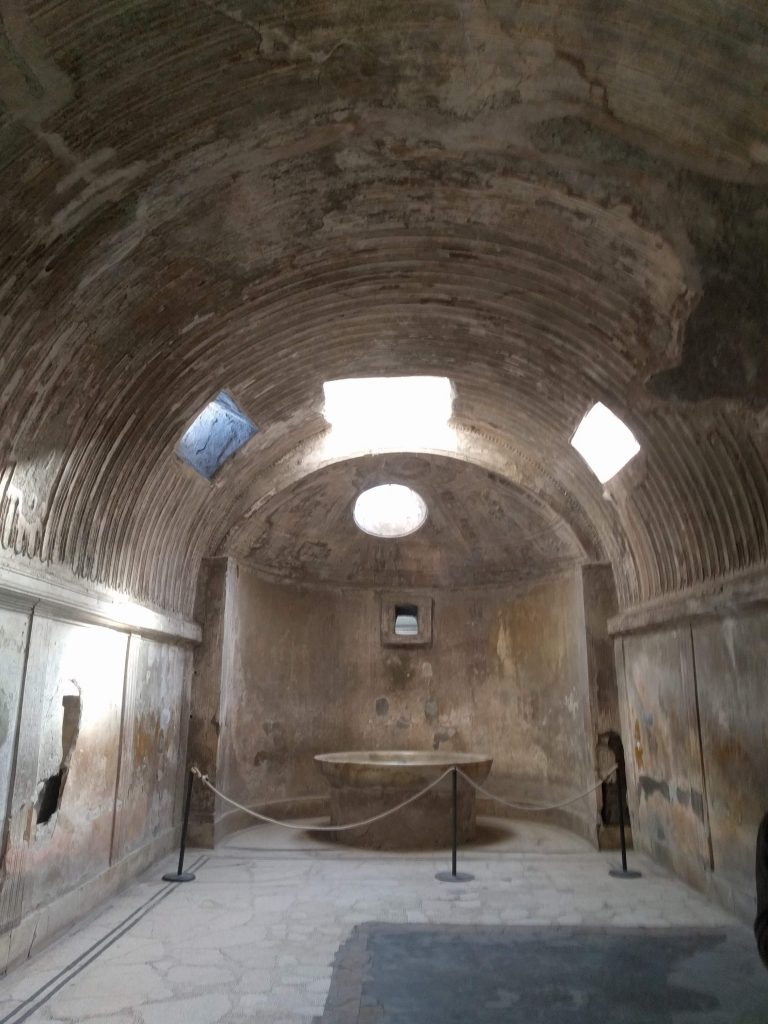
- Way bigger than expected!
- Roads very narrow.
- The roads were used so much that there were actually ruts carved into the hard stone by Roman chariot wheels.
- The wheels were 4 foot, 8.5 inches apart, same as US trains today!
- The roads were made of the hardest dark stone but they had small pieces of white stone inlaid so that they would reflect the moonlight and you could see the road to navigate at night.
- There were HUGE stepping stone at intersections that were about 12 inches tall. Carts could drive with their wheels on either side and their carriage over them and people could use them to cross the streets without stepping in the raw sewage and other filth.
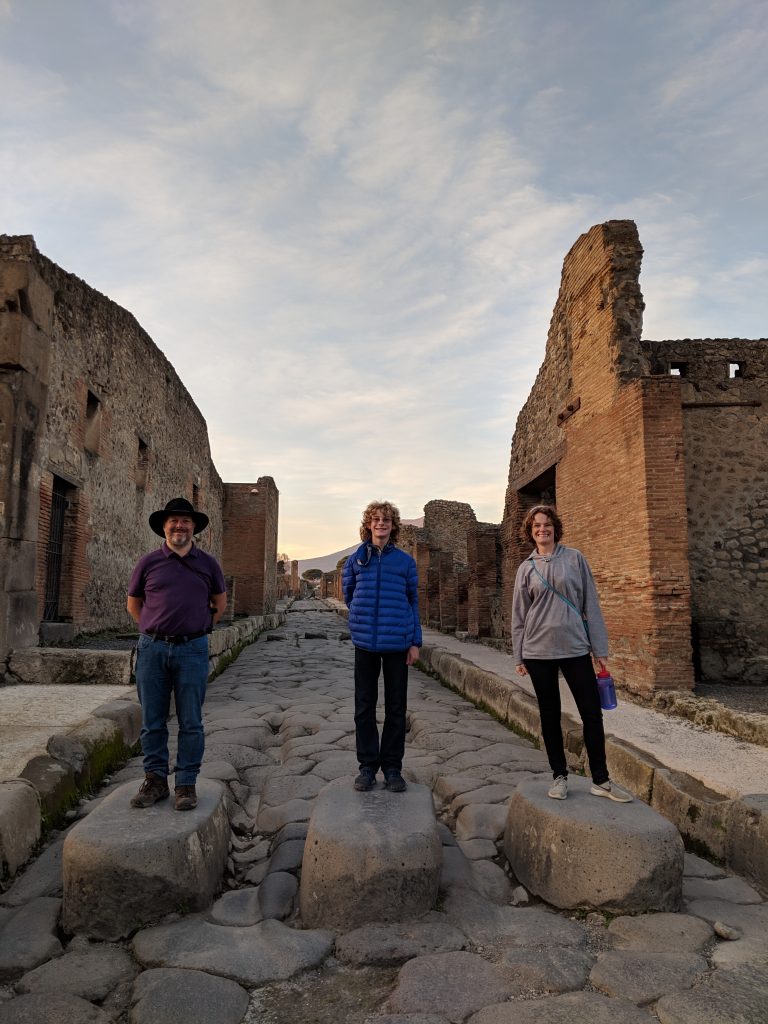
- Older style of construction than I expected.
- 2 mayors, one elected and they had to work together
- One by aristocrats
- One by working class
- Thousands of artifacts
- Artifacts sitting in a shed because the museum is full
- The city is very complete because Vesuvius preserved it
- Thousand of frescos, most in nearly perfect condition
- The tile mosaics are the most complex I have ever seen
- seen many of mosaics but did not know they were there
- The fresco of Alexander the Great that I have seen so much but did not realize it was there. This is made of micro tiles. They were TINY. Like, smaller than a pencil eraser and the entire things was HUGE!
- (Top Photo from By Berthold Werner, CC BY-SA 3.0, https://commons.wikimedia.org/w/index.php?curid=32224321)
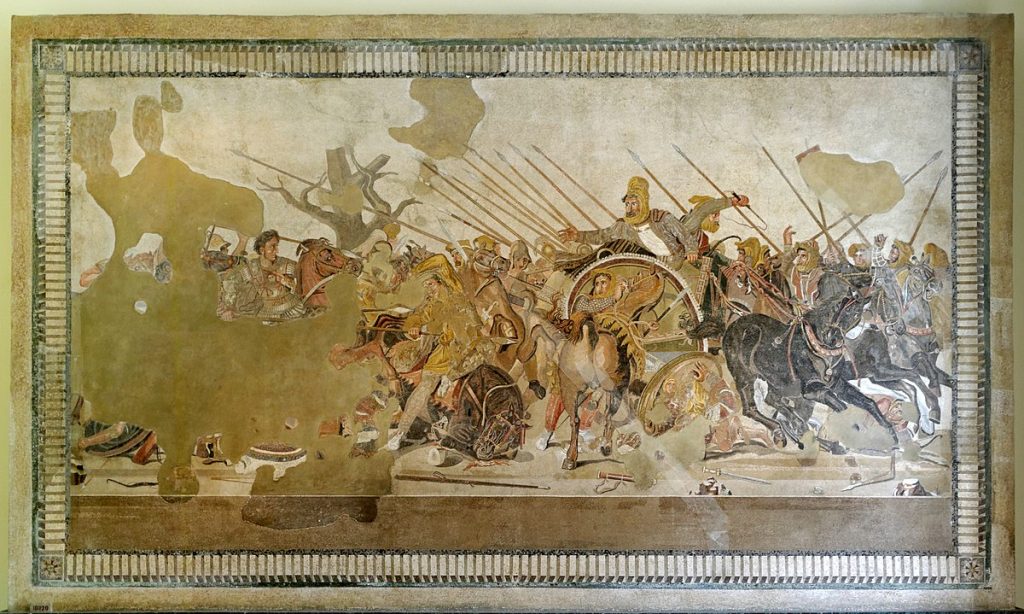
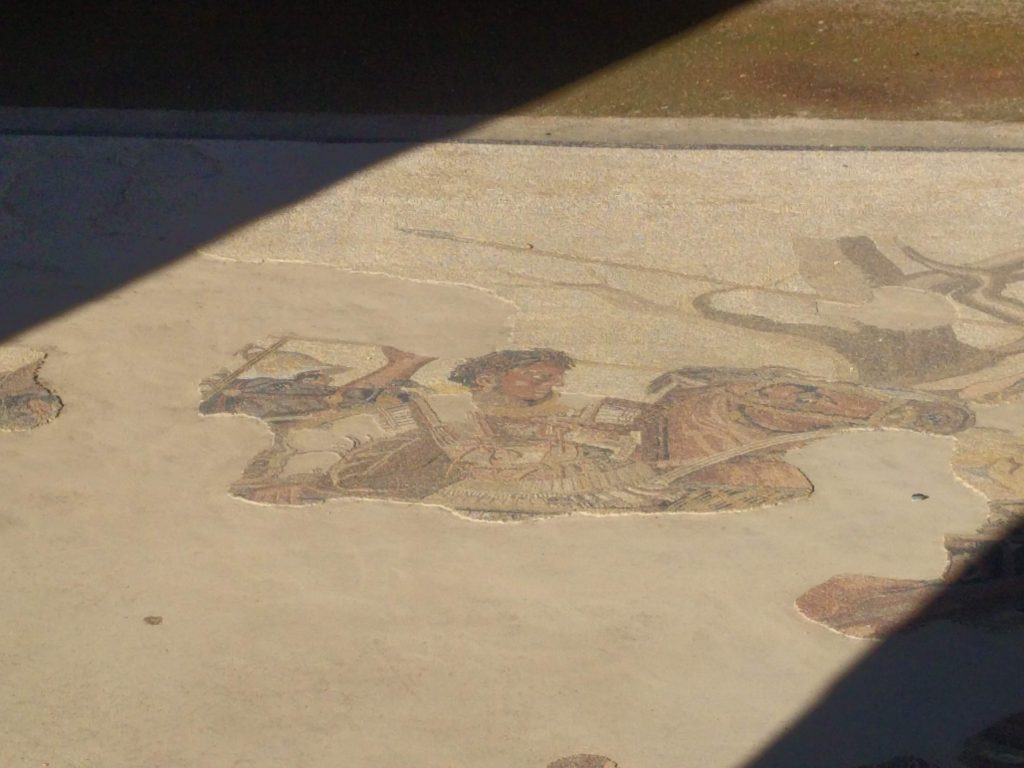
- The streets had no names.
- You would meet or give directions using the carved fountains. For example, meet me at the bull fountain.
- There were over 80 fountains but no two were the same!
- The city is less precisely organized than expected. I expected each street to be named and buildings numbered.
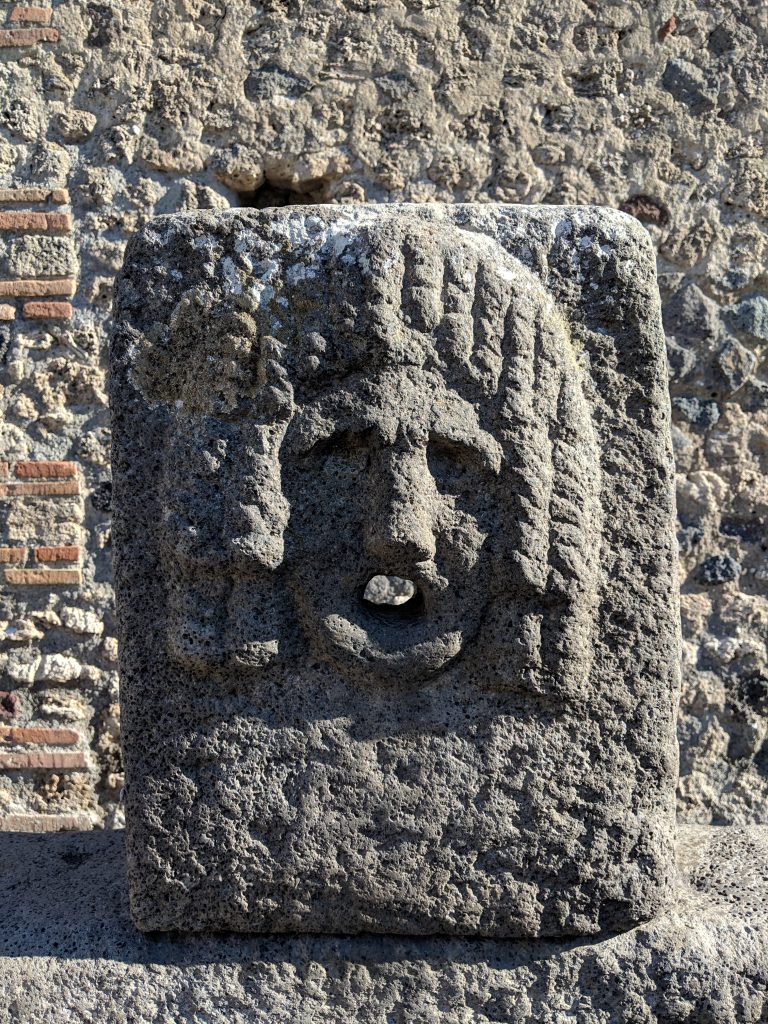
- They had running water!
- 93-mile long aqueduct
- Some places in the U.S. are without running water.
- The amphitheater is actually older than the Collesium in Rome!
- When it was a busy city, the sea was right along the side of the city wall. Due to the eruption, there is now 2 miles of new land to the sea is 2 miles from Pompeii.
- Vesuvius used t be 9000 feet tall but during the explosion, it is now less than 3000 feet.
- The big explosion was around 79AD.
- There were about 15,000 people living in Pompeii at the time of the explosion.
- All the houses were made in the same layout. A central atrium with a water collection pool surrounded by private rooms with other rooms like the kitchen outside those. There was a sun terrace for meals and the garden was within the walls of the home.
- Stores all had a similar layout. They were usually small with a folding wooden door that could be closed along a track to secure it when it was closed.
- They had running water in most of the buildings. They used lead pipes which were not poisonous because there were so many minerals in the water that the calcium coated the inside of the pipes and the lead did not seep into the water.
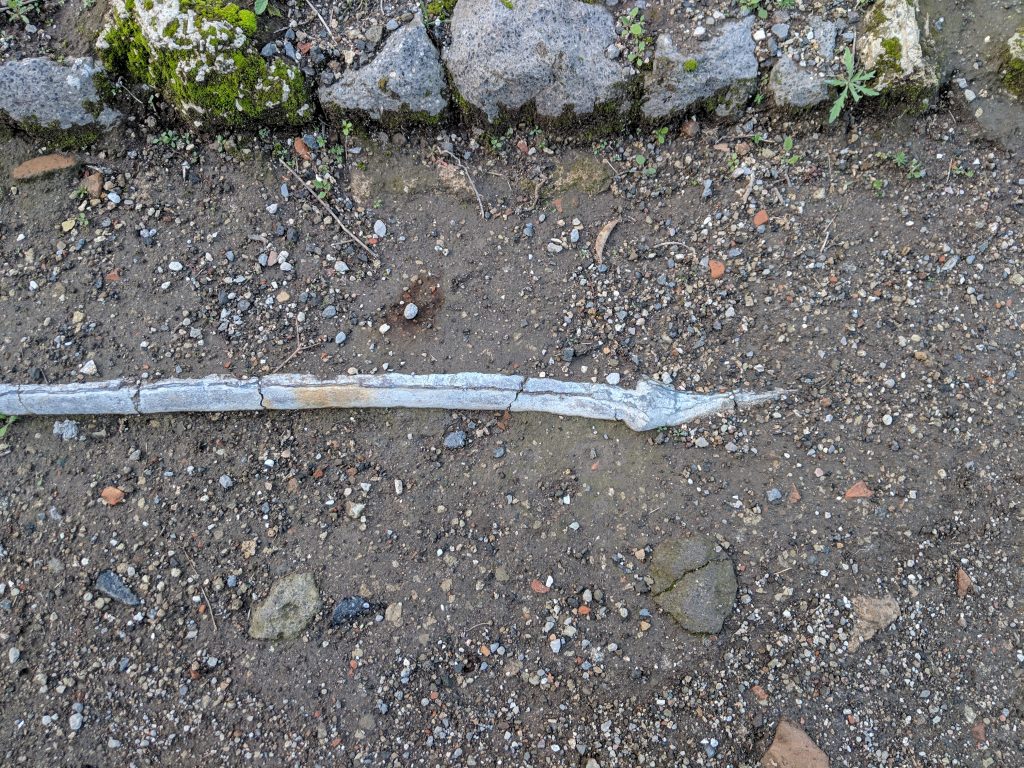
- There were fast food restaurants!
- They had large jars set into the counters in some of the stalls. They kept food warm so it could be sold fast and hot. These were called Thermopoliums.
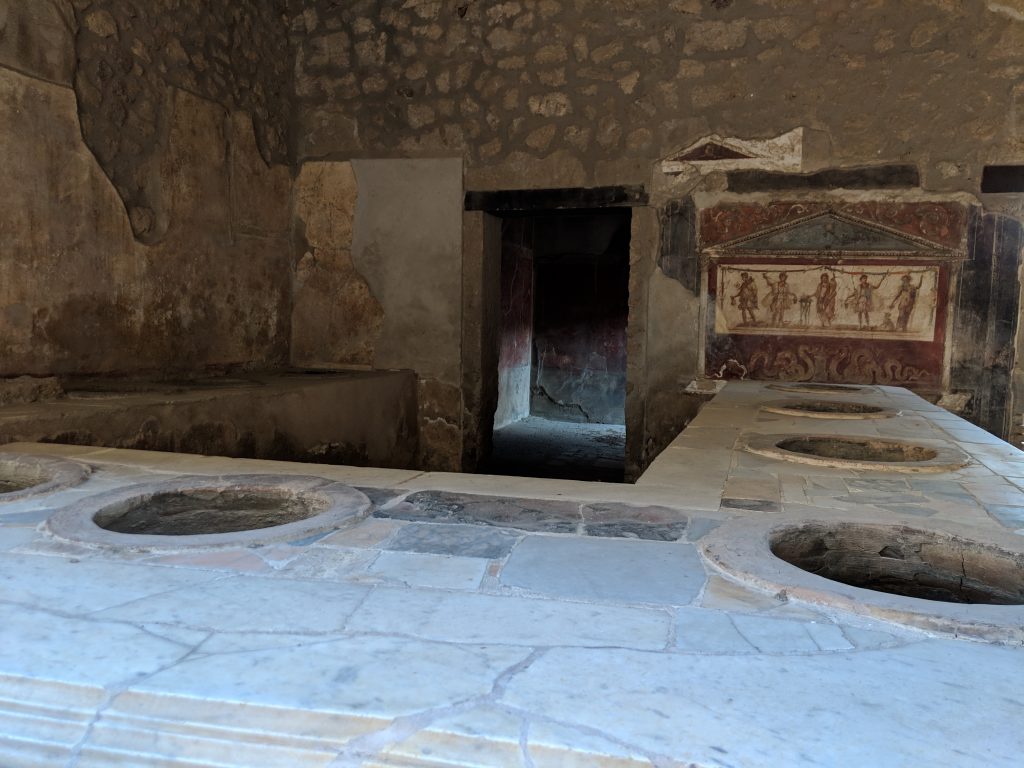
As has become tradition for us, we stayed until they were closing and the employees told us we had to leave! Here are some of my other photos!
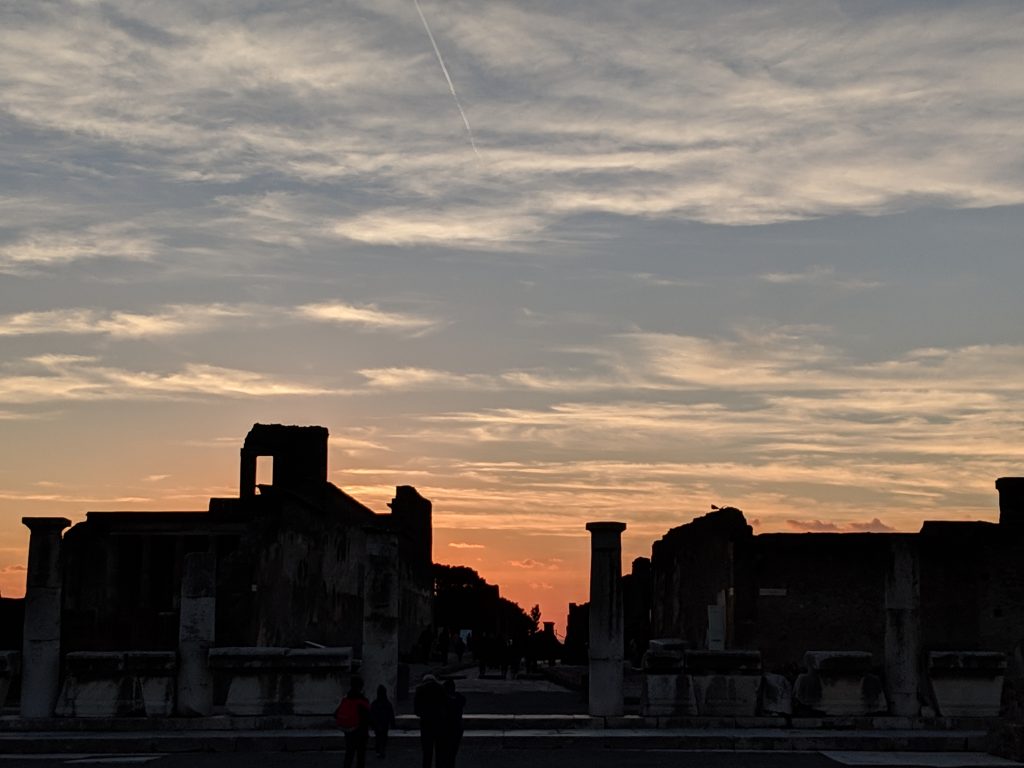
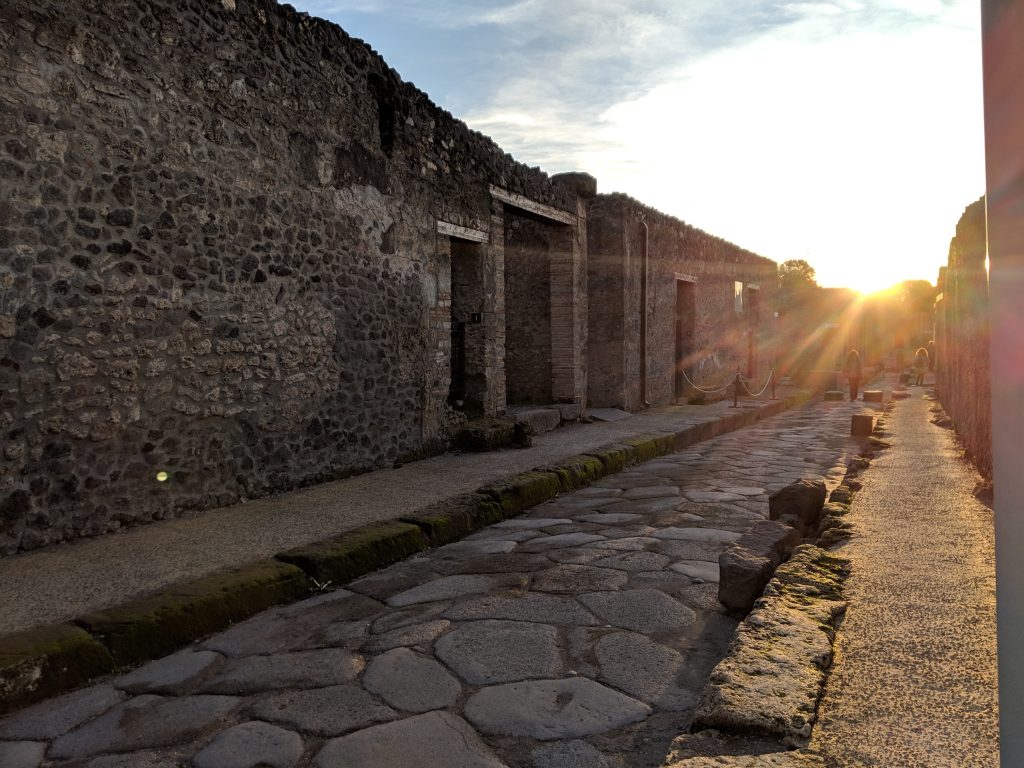
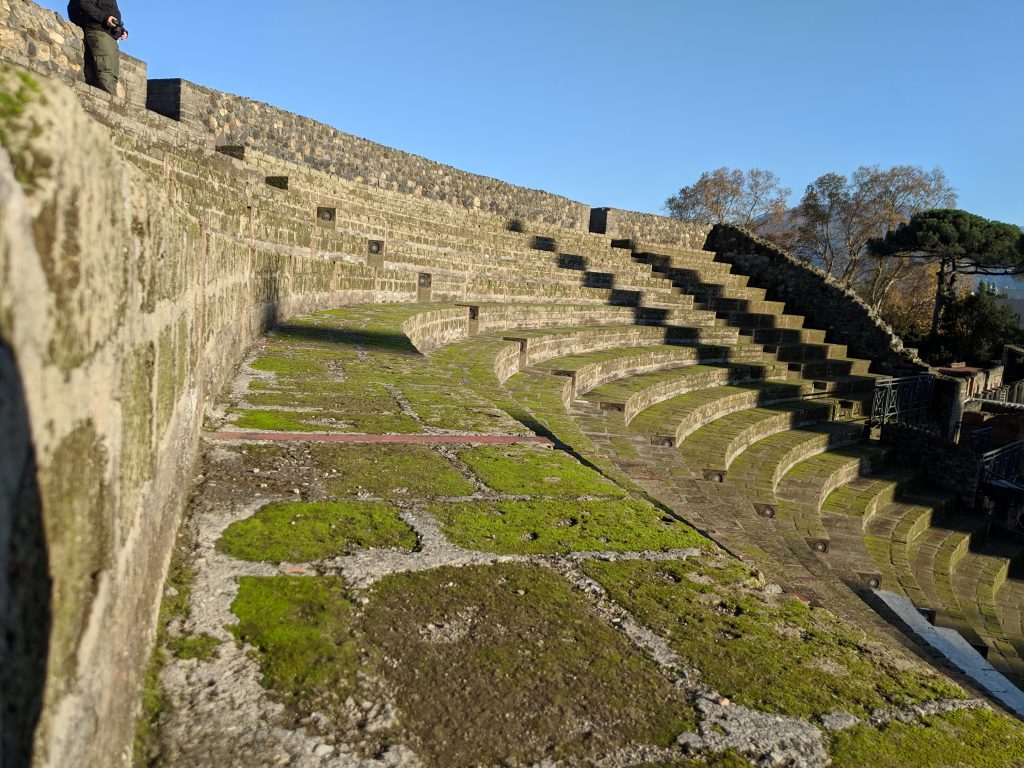
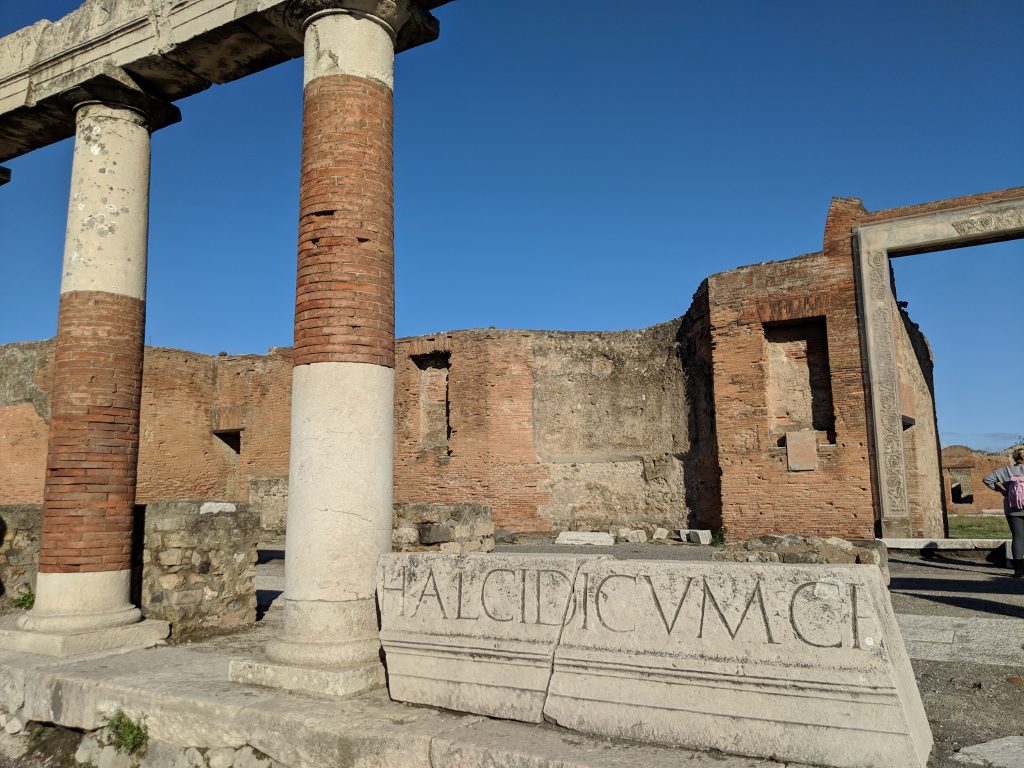
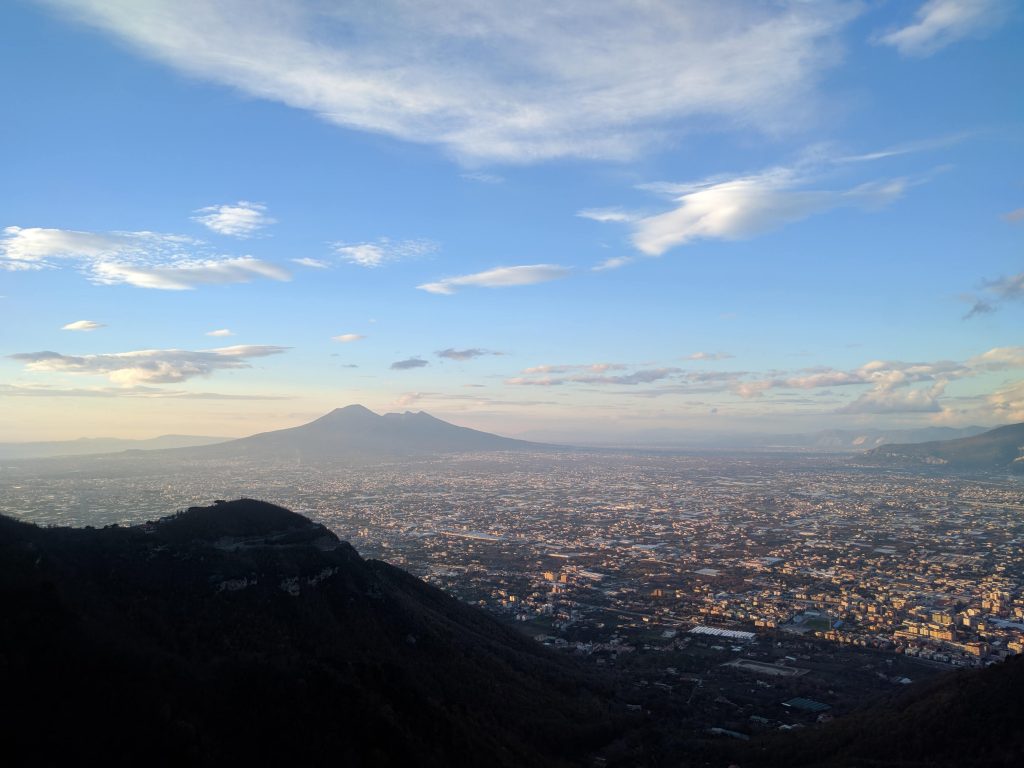
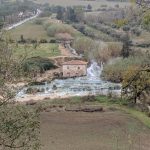 Previous Post
Previous Post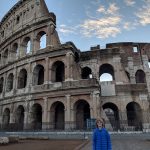 Next Post
Next Post
Wow, awesome description. Makes me want to go there NOW. Love the pictures too. Great job.
Rhys, you did a wonderful job describing and photographing Pompeii. It is one of the favorite places I visited when I was in Europe in the mid 1980s. I still remember those stepping stones in the street and why they had to be there. I always imagined that it must have smelled horrific back then in any city! But Pompeii seemed so amazingly advanced for its time, and I loved seeing it. Looks like you did, too.